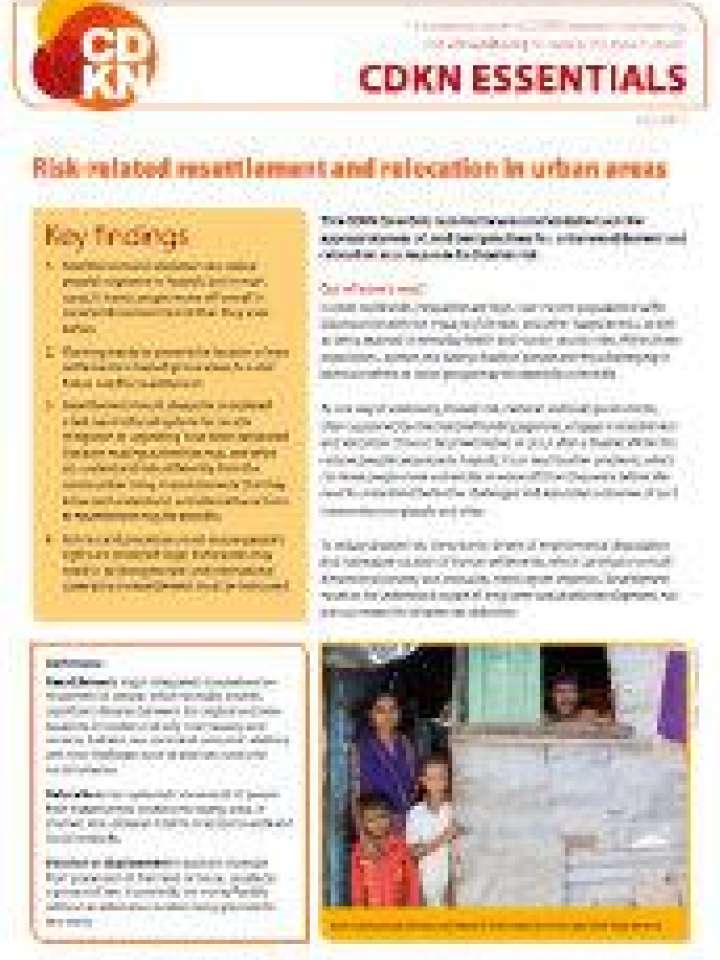Risk-related resettlement and relocation in urban areas
This brief summarises recommendations on the appropriateness of, and best practices for, urban resettlement and relocation as a response to disaster risk. It looks at the challenges and associated outcomes of preventative or post-disaster resettlement on people and cities.
To reduce disaster risk, the systemic drivers of environmental degradation and inadequate location of human settlements, which contribute to multi-dimensional poverty and inequality, need urgent attention. Resettlement needs to be understood as part of long-term sustainable development, not just as a means for disaster risk reduction.
Key findings
- Resettlement and relocation can reduce people’s exposure to hazards, but in most cases, it leaves people worse off overall in social and economic terms than they were before.
- Planning needs to prevent the location of new settlements in hazard-prone areas, to avoid future need for resettlement.
- Resettlement should always be considered a last resort after all options for on-site mitigation or upgrading have been exhausted. Decision-making authorities may, and often do, understand risks differently from the communities living in environments that they know and understand, and alternative actions to resettlement may be possible.
- Policies and procedures must ensure people’s rights are protected; legal frameworks may need to be strengthened; and international covenants on resettlement must be honoured.
Explore further
